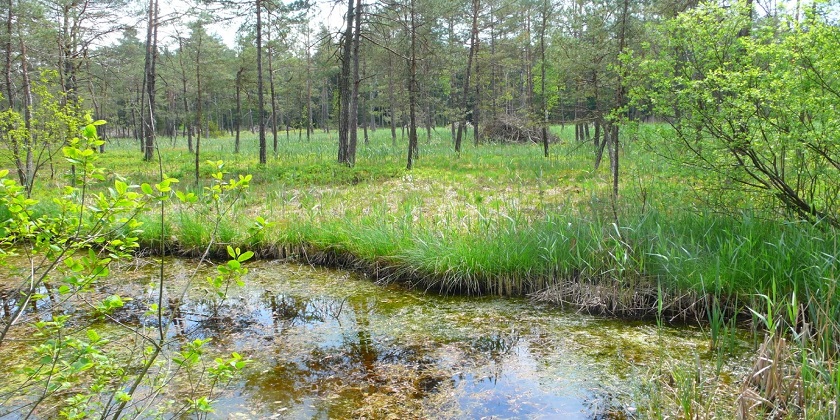Department Aquatic Ecology
The land-water-scape: Capacity building across the blue-green interface

This project contributes to the Blue Green Biodiversity Research Initiative – an Eawag-WSL collaboration focusing on Biodiversity at the interface of aquatic and terrestrial ecosystems.
Aquatic and terrestrial ecosystems are mostly studied in isolation, despite their intricate linkage, including movement of species, flows of resources, and cascading effects of environmental change. This disciplinary divide is seen in the scientific literature, across research projects, and in academic institutions, but it is also seen at the level of stakeholders and environmental managers, who often neglect the relevance of cross-ecosystem dynamics with respect to management and legal implications. Most problematic, this divide is continuously propagated by how the next generation of scientists and stakeholders is trained.
In this project, we aim to close this knowledge and capacity gap across blue-green ecosystems by developing implementable training/teaching material. Specifically, we will write a book targeting advanced education (BSc students), stakeholders and the interested public, in which we develop and illustrate the concept of the land-water-scape in Swiss landscapes. This will include specific cases, such as floodplains, lake-fen interfaces, or springs, for which we showcase the concept of the land-water-scape and exemplify that this requires an understanding of the respective flora and fauna, and of the geological, abiotic and anthropogenic drivers of both aquatic and terrestrial components. The core structure of the book will be scientifically-inspired excursions across land-water-scapes, in which the relevance of blue-green dependencies on both states and processes is described. The excursions will be directly implementable and tangible, and contribute to an actionable change of mind on how students, scientists, and next-generation stakeholders know and experience these natural ecosystems.


